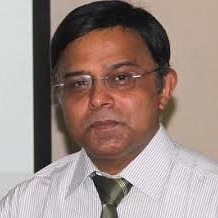Software Engineering Development and Applications for Sustainability
A special issue of Sustainability (ISSN 2071-1050). This special issue belongs to the section "Sustainable Engineering and Science".
Deadline for manuscript submissions: closed (30 June 2022) | Viewed by 17871
Special Issue Editors
Department of Software Engineering, Atilim University, 06830 İncek, Turkey
Interests: software engineering; information systems; digitalization; artificial intelligence
Interests: green software; software sustainability; software engineering; information systems
Interests: green software; software sustainability; software engineering
Interests: software quality; health informatics; cybersecurity of critical infrastructure; agile methods; requirement engineering; software measurement and metrics; global software engineering and computing education
Interests: software for sustainability; innovation; technologies and approaches for communications; networks (social; technical; business)
Special Issues, Collections and Topics in MDPI journals
Special Issue Information
Software has become an integral part of our everyday life and is gradually impacting human beings and society. Climate change risk and environmental degeneration are the most critical issues facing our society. Therefore, environmental concerns should be addressed in software and information system development, implementation, and operation. Sustainable Software engineering is an emerging paradigm and significant for society in terms of the environment. The present industrial production and more and more use of information technology endanger prospective sustainability and lead to environmental problems. Sustainable software engineering is based on the foundation of designing and developing software by taking into consideration various dimensions of sustainability, economic, environmental, individual, social, and technical. Sustainability dimensions (social, individual, environmental, economic, and technical) are interwoven with functions and constraints of any given socio-technical system, and mutually interdependent, and contextualized by the ethical and legal norms and social practices.
The United Nations Agenda 2030 for sustainable development lays out the global and local challenges mankind is facing with a view to the needed transformation towards sustainable development. Software now plays a crucially significant role in environmental and energy areas. Organizations are beginning to understand that not only cost efficiency, but also long-term and continued prosperity can be gained from sustainability. Therefore, apart from factors like cost, time, and quality, sustainability has also become a significant objective to achieve when developing, configuring, operating, and implementing software systems.
Besides aspects related to how the software can be sustainable, there is another fundamental aspect that must be taken into account: making society (all the software stakeholders) aware of the substantial impact that software has on the environment. When software sustainability becomes a real milestone for everyone, it will be possible to move forward, and advance and integrate sustainability as a factor during software development. End-users can make a difference; if they ask for sustainable software, vendors and the software industry will incorporate it into the business processes.
Dear Colleagues,
This Special Issue presents a collection of papers of original advances in sustainability and software engineering drive by industry, practitioners, and academics working in this area, and also related to the social awareness of the impact of software.
Prof. Dr. Alok Mishra
Prof. Dr. Coral Calero
Dr. Mª Ángeles Moraga
Assoc. Prof. Dr. Deepti Mishra
Prof. Dr. Jari Porras
Guest Editors
Manuscript Submission Information
Manuscripts should be submitted online at www.mdpi.com by registering and logging in to this website. Once you are registered, click here to go to the submission form. Manuscripts can be submitted until the deadline. All submissions that pass pre-check are peer-reviewed. Accepted papers will be published continuously in the journal (as soon as accepted) and will be listed together on the special issue website. Research articles, review articles as well as short communications are invited. For planned papers, a title and short abstract (about 100 words) can be sent to the Editorial Office for announcement on this website.
Submitted manuscripts should not have been published previously, nor be under consideration for publication elsewhere (except conference proceedings papers). All manuscripts are thoroughly refereed through a single-blind peer-review process. A guide for authors and other relevant information for submission of manuscripts is available on the Instructions for Authors page. Sustainability is an international peer-reviewed open access semimonthly journal published by MDPI.
Please visit the Instructions for Authors page before submitting a manuscript. The Article Processing Charge (APC) for publication in this open access journal is 2400 CHF (Swiss Francs). Submitted papers should be well formatted and use good English. Authors may use MDPI's English editing service prior to publication or during author revisions.
Keywords
- sustainable software
- sustainable software engineering
- sustainable software development
- sustainable requirements engineering
- sustainable software architecture and design
- sustainability in software process, evolution, and maintenance
- sustainability assessment in software development
- sustainable software engineering education
- green software engineering
- green information technology
- green information system
- sustainable information technology practices
- software sustainability awareness
- software sustainability and society
- software sustainability roi
- economical aspects of software sustainability
- social aspects of software sustainability stakeholders
Benefits of Publishing in a Special Issue
- Ease of navigation: Grouping papers by topic helps scholars navigate broad scope journals more efficiently.
- Greater discoverability: Special Issues support the reach and impact of scientific research. Articles in Special Issues are more discoverable and cited more frequently.
- Expansion of research network: Special Issues facilitate connections among authors, fostering scientific collaborations.
- External promotion: Articles in Special Issues are often promoted through the journal's social media, increasing their visibility.
- e-Book format: Special Issues with more than 10 articles can be published as dedicated e-books, ensuring wide and rapid dissemination.
Further information on MDPI's Special Issue polices can be found here.









